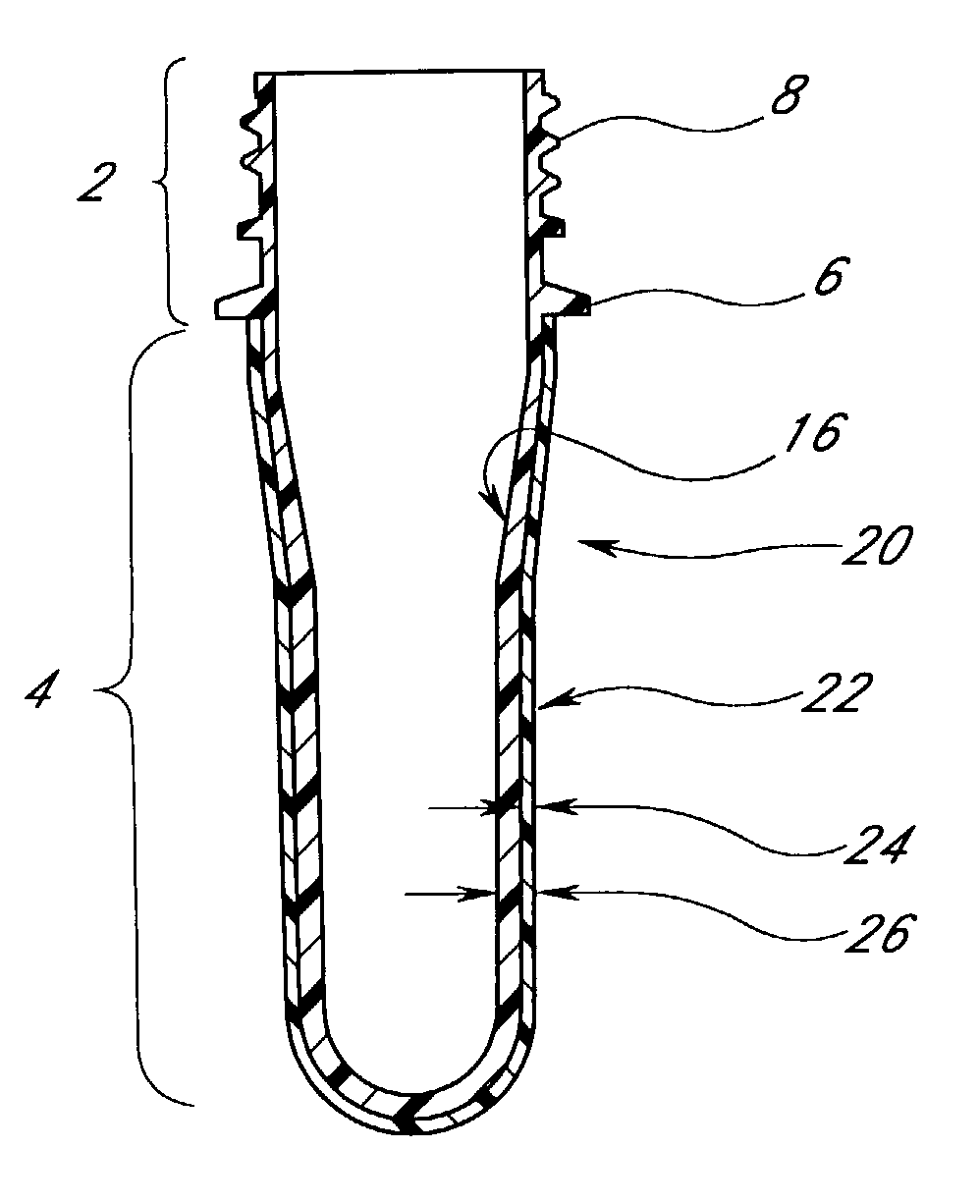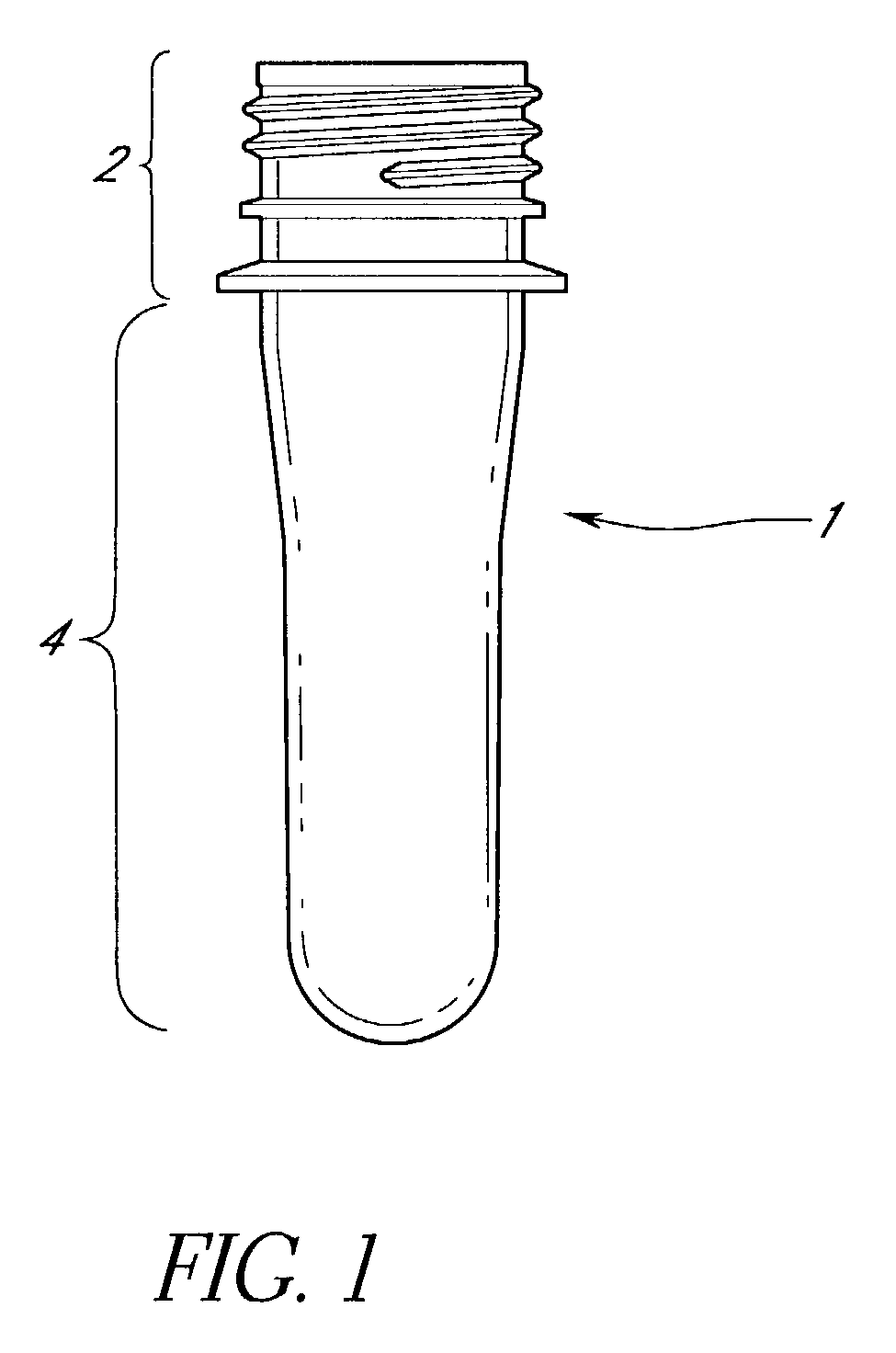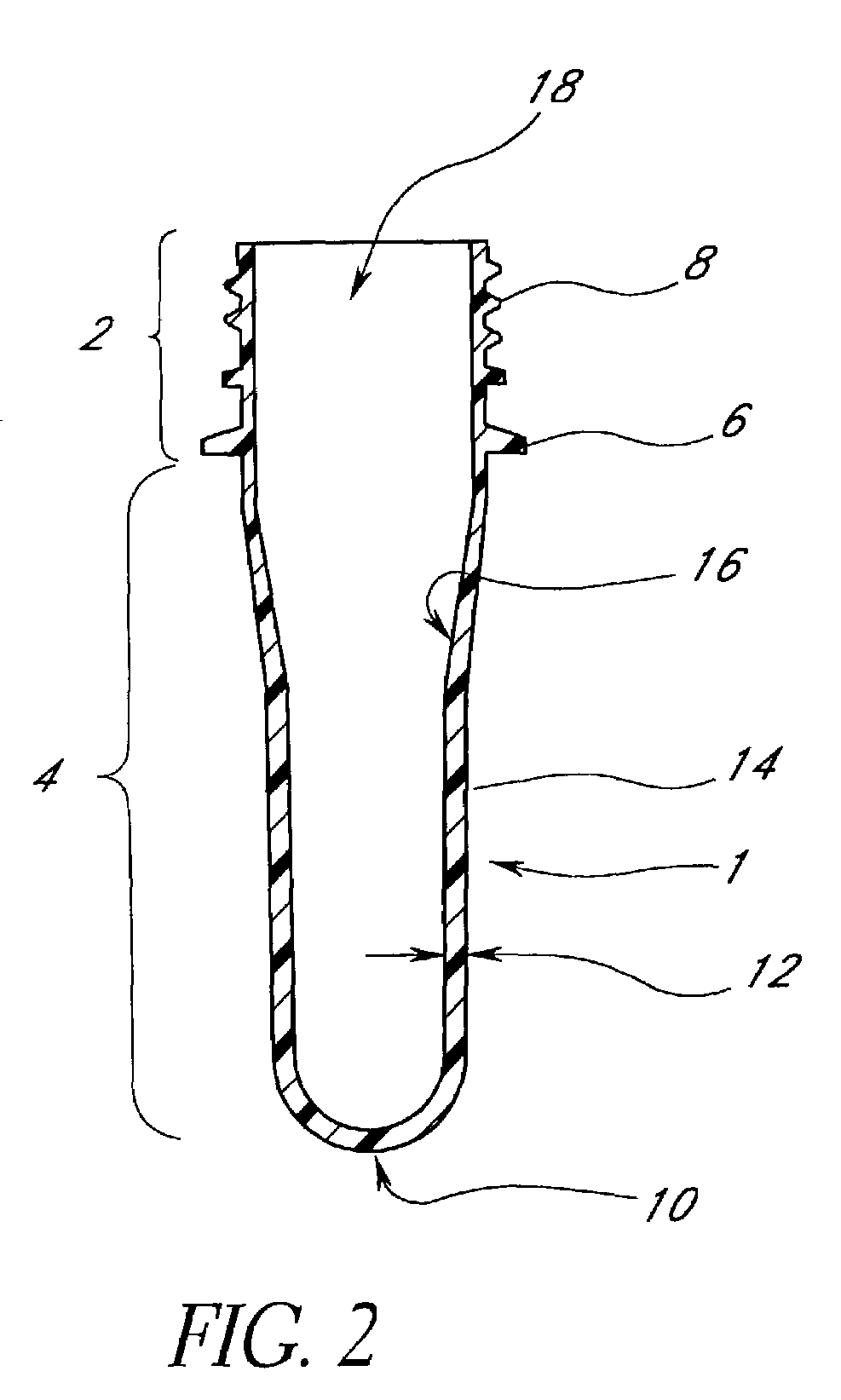Coated polyester preforms and articles
a technology of coated polyester and preforms, applied in the direction of rigid containers, synthetic resin layered products, packaging, etc., can solve the problems of thermal plastic barrier materials and difficult separation, and achieve good gas-barrier characteristics
- Summary
- Abstract
- Description
- Claims
- Application Information
AI Technical Summary
Benefits of technology
Problems solved by technology
Method used
Image
Examples
example 1
[0140]A sample of a Phenoxy-type Thermoplastic resin, specifically a PHAE available from Dow Chemical Company as XU19040.00L was obtained as small pellets. The pellets were dissolved in dimethylformamide to a concentration of 40% by weight. Eight identical 17.5 g virgin PET preforms of the type used to make a 16 oz. carbonated beverage bottle were placed in a rack and dipped into the bath containing the resin / DMF solution which was at room temperature (approximately 21-23 C.). After 5 seconds the preforms were removed from the bath and dried for 8 hours in an oven set at about 75 C.
[0141]Before dip-coating, the preforms weighed an average of 17.5 grams. After dip-coating the preforms weighted an average of 18.0 grams, having had 0.5 grams of resin coated thereon by the process.
[0142]Another method of producing coated PET articles in accordance with the present invention is by spray coating. In this method, the PET preforms are sprayed with a solution of barrier resin...
example 2
[0151]A sample of a Phenoxy-type Thermoplastic resin, specifically a poly(hydroxyamino ether) available from Dow Chemical Company as XU19040.00L was obtained as small pellets. The pellets were ground into a powder and sieved using a 100 mesh screen according to standard processes known in the art to selectively obtain 120 to 180 mesh powder. Three clean preforms made of virgin PET of the type to form a 68 oz bottle weighing approximately 48 grams each were heated to 100 C. and then flame-sprayed using a Unispray Jet Gun. Preforms were removed from the flame at different times in order to get barrier-coatings of varying thickness. A preform left in the flame for 5 seconds was coated with 4.5 grams of resin, the preform left for 8 seconds received 8.6 grams, and the preform left for 10 seconds was coated with 11.5 grams of resin.
4. Fluidized Bed Dipping
[0152]Another method of producing barrier coated PET preforms in accordance with the present invention is fluidized bed dipping. In th...
example 3
[0155]A sample of a Phenoxy-type Thermoplastic resin, specifically a PHAE available from Dow Chemical Company as XU19040.00L was obtained as small pellets. The pellets were ground into a powder and sieved using a 80 mesh screen according to standard processes known in the art to selectively obtain 80 to 100 mesh powder. Clean preforms of virgin PET weighing approximately 48 grams each were heated to 75-100 C. and then immersed in a fluidized bed containing the PHAE powder. The powder in the bed was maintained at room temperature and the air-flow rate through the bed was sufficient to fluidize the powder. Preforms were removed after 8 seconds and flame treated to melt the powder and create a uniform clear coating. The preforms were coated, on average, with 0.7 grams of resin.
5. Electrostatic Powder Spray
[0156]Another method of producing a coated PET preform in accordance with the present invention is electrostatic spraying of the PET preform using a powdered resin of the barrier coat...
PUM
| Property | Measurement | Unit |
|---|---|---|
| thickness | aaaaa | aaaaa |
| thickness | aaaaa | aaaaa |
| thickness | aaaaa | aaaaa |
Abstract
Description
Claims
Application Information
 Login to View More
Login to View More - R&D
- Intellectual Property
- Life Sciences
- Materials
- Tech Scout
- Unparalleled Data Quality
- Higher Quality Content
- 60% Fewer Hallucinations
Browse by: Latest US Patents, China's latest patents, Technical Efficacy Thesaurus, Application Domain, Technology Topic, Popular Technical Reports.
© 2025 PatSnap. All rights reserved.Legal|Privacy policy|Modern Slavery Act Transparency Statement|Sitemap|About US| Contact US: help@patsnap.com



